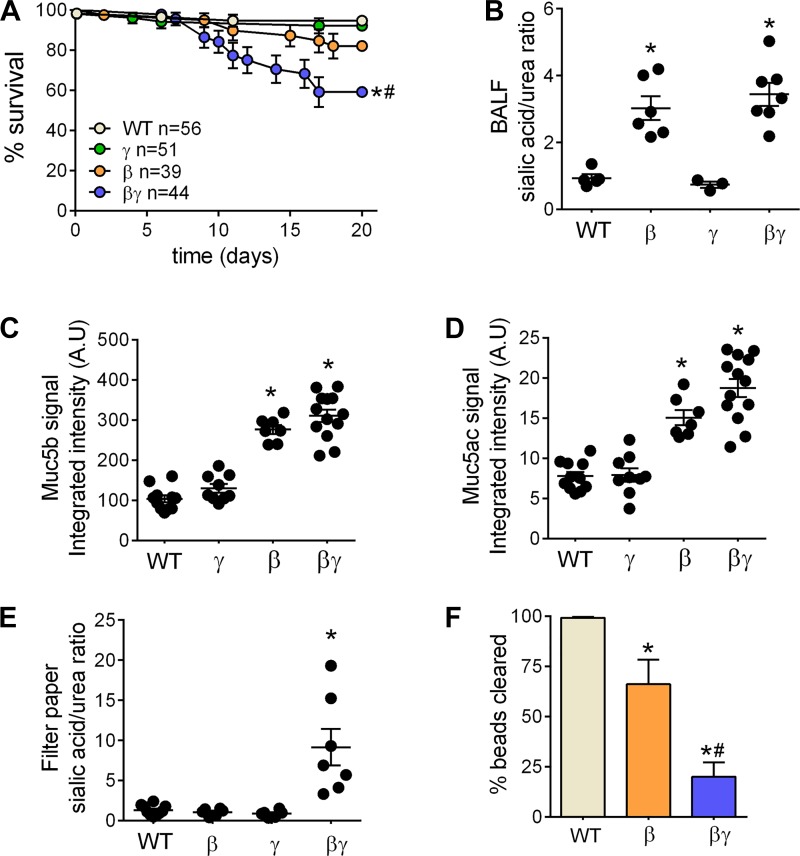Fig. 3.
Congenic βγENaC-Tg mice exhibit decreased survival, increased mucus dehydration, and decreased mucociliary clearance (MCC) compared with βENaC-Tg littermates. A: survival curves for progeny of the β × γENaC-Tg cross in the C57BL/6N genetic background; n = no. of mice/ genotype. Log-rank *P < 0.05 vs. WT mice; #P < 0.05 vs. βENaC-Tg mice. B: bronchoalveolar lavage fluid (BALF) sialic acid/urea ratio from postnatal day (PND)10 mice from the congenic β × γENaC-Tg cross; n = 3–7/genotype. Log-rank *P < 0.05 vs. WT mice. C and D: densitometric analysis of BAL mucin agarose Western blots for progeny of the congenic β × γENaC-Tg cross at PND10. Blots were probed with anti-Muc5b (C) or anti-Muc5ac (D) antibodies; n = 7–13 mice/genotype. ANOVA *P < 0.05 vs. WT mice. E: sialic acid/urea ratio in native mucus harvested with filter paper from tracheas of PND10 mice of the congenic β × γENaC-Tg cross; n = 6–10 mice/genotype. ANOVA *P < 0.05 vs. WT mice. F: MCC measurements in progeny of the congenic β × γENaC-Tg cross at PND10; n = 5–8 mice/genotype. ANOVA *P < 0.05 vs. WT mice; #P < 0.05 vs. βENaC-Tg mice.

